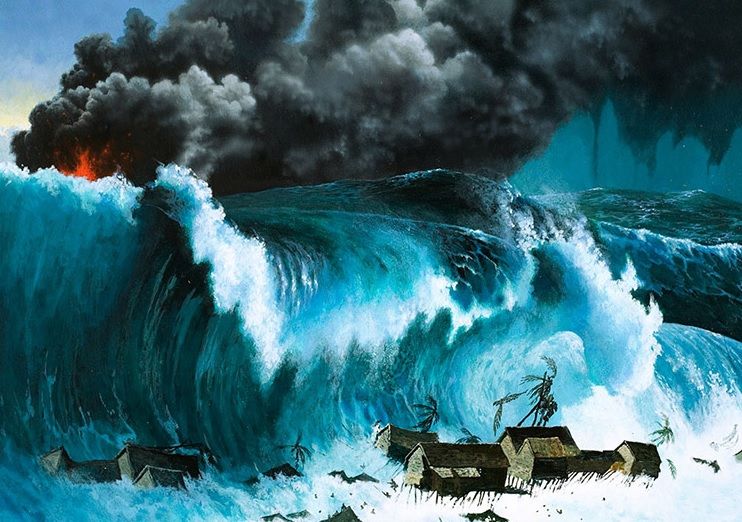Tsunami is a terrible natural disaster. A tsunami is a picture of a very large wave that hits the mainland. It is undeniable that the part of the land (read: land breeze) that is hit by the waves will be crushed because of the power possessed by the waves. The occurrence of a tsunami is usually not a single natural disaster. That is, usually a tsunami does not come by itself suddenly. But usually there is someone who delivers it, so a tsunami occurs. Several natural events are the cause of the tsunami. The things that cause a tsunami to occur include the following:

Underwater earthquake
Earthquakes are the most common thing that can cause a tsunami. The earthquake in question is of course an underwater earthquake (read: types of earthquakes). Underwater earthquakes cause a lot of vibrations that will trigger tsunami waves. Underwater earthquakes are the cause of the majority of tsunamis in the world. Nearly 90 percent of the world’s tsunamis are caused by earthquakes that occur under the sea. Earthquakes that occur under the sea is a type of tectonic earthquake that arises due to the meeting or collision of tectonic plates. Although underwater earthquakes are the main cause of tsunamis, this does not mean that all underwater earthquakes can cause tsunamis.
Underwater volcanic eruption
The next cause of the tsunami was the occurrence of a volcanic eruption under the sea (read: the danger of a mountain under the sea). The oceans that cover two thirds of the earth’s surface hold many secrets. We don’t know much about the appearance of underwater appearances, that in fact it is not only land that has active mountains, but also underwater has many active mountains. Some active volcanoes under the sea can potentially explode or erupt at any time (read: characteristics of an erupting volcano). Due to a large or strong eruption of this underwater volcano, it causes a tsunami.
One of the major events that describes the occurrence of a tsunami caused by a volcanic eruption is in Indonesia, precisely in the west of the island of Java. Mount Krakatoa, its name, erupted in 1883. This event caused a huge tsunami wave that wiped out the area around the Sunda Strait. In addition to the Krakatoa incident, in Indonesia there was also the eruption of Mount Tambora in 1815 in East Nusa Tenggara which resulted in the occurrence of the Maluku islands. Indonesia is a country that has many volcanoes, so it is nicknamed the Ring of Fire. This makes Indonesia always have to be vigilant because volcanic eruptions can occur at any time.
The occurrence of underwater landslides
The cause of the next tsunami wave is the occurrence of underwater landslides (read: landslides). A tsunami caused by an underwater landslide is called a Submarine Landslide Tsunami. It turns out that landslides do not only occur on land. As previously explained, the shape of the underwater surface resembles land. if on land we find hills and ravines, then the same is true in the oceans (read: sea trenches), so there is a potential for landslides to occur. Underwater landslides are generally caused by tectonic earthquakes or underwater volcanic eruptions. The strong vibrations caused by the landslide can cause a tsunami. In addition to tectonic earthquakes and volcanic eruptions, the collision of plates under the sea can also cause landslides. In 2008 a study was conducted in the Indian Ocean which stated that there was a sea trough stretching from the island of Siberut to the coast of Bengkulu Beach where if the trough were to collapse, a tsunami would occur on the west coast of Sumatra.
There is a meteor hit
The next cause of the tsunami is the impact of meteors or celestial bodies. This falling celestial body is of course a large celestial body. Although it rarely happens, and there is not even documentation that mentions a tsunami caused by a meteor strike, this can happen. As simulated by sophisticated computers, if there is a large meteor (because small meteors will usually burn up in the earth’s atmosphere) for example more than 1 kilometer in diameter, it can cause a terrible natural disaster.